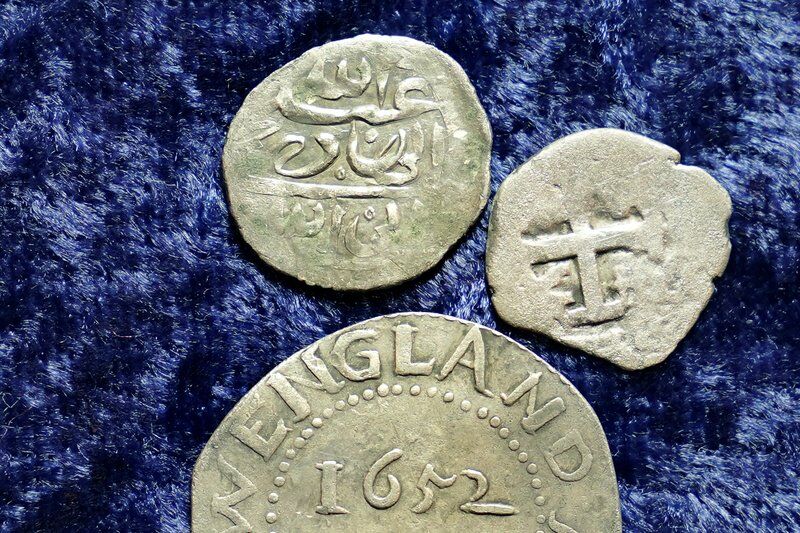17th-century pirates might have stashed Middle Eastern coins in New England

Enlarge / A Yemeni khamsiyat (top left), a Spanish real (top right), and a shilling minted in the American colonies (bottom) from the 17th century. (credit: Associated Press)
According to historian and metal-detector enthusiast Jim Bailey, the handful of 17th-century Arabic coins unearthed at sites across New England could be remnants of an infamous pirate's last big score-or, to put it another way, money stolen from a ship full of religious pilgrims during a horrific mass murder at sea.
"It's a new history of a nearly perfect crime," Bailey told the Associated Press.
Bailey found a handful of Colonial-era coins and musket balls, along with a shoe buckle, buried beneath a fruit orchard in Middletown, Rhode Island in 2014. Amid the English and Colonial-issued coins, Bailey noticed something unusual: a coin as weathered and tarnished as the rest but engraved in Arabic. It turned out to be a Yemeni coin called a khamsiyat, minted in 1693.
Read 15 remaining paragraphs | Comments